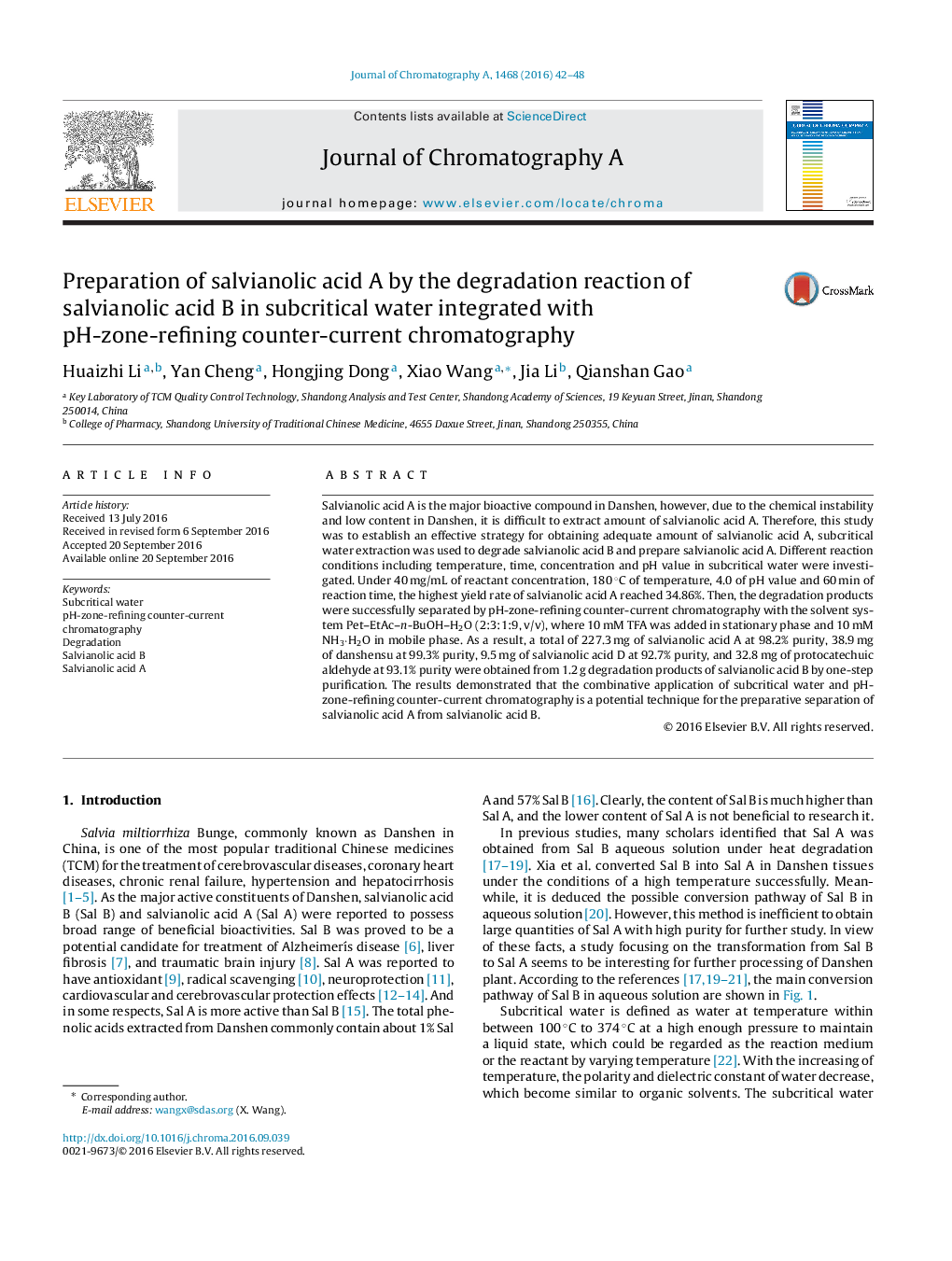| Article ID | Journal | Published Year | Pages | File Type |
|---|---|---|---|---|
| 5135863 | Journal of Chromatography A | 2016 | 7 Pages |
â¢Preparation of Sal A by the degradation of Sal B in subcritical water.â¢Reaction conditions were optimized to improve the yield of Sal A.â¢Sal A was successfully separated by PZRCCC.â¢Other three degradation products of Sal B were successfully separated by PZRCCC.
Salvianolic acid A is the major bioactive compound in Danshen, however, due to the chemical instability and low content in Danshen, it is difficult to extract amount of salvianolic acid A. Therefore, this study was to establish an effective strategy for obtaining adequate amount of salvianolic acid A, subcritical water extraction was used to degrade salvianolic acid B and prepare salvianolic acid A. Different reaction conditions including temperature, time, concentration and pH value in subcritical water were investigated. Under 40 mg/mL of reactant concentration, 180 °C of temperature, 4.0 of pH value and 60 min of reaction time, the highest yield rate of salvianolic acid A reached 34.86%. Then, the degradation products were successfully separated by pH-zone-refining counter-current chromatography with the solvent system Pet-EtAc-n-BuOH-H2O (2:3:1:9, v/v), where 10 mM TFA was added in stationary phase and 10 mM NH3·H2O in mobile phase. As a result, a total of 227.3 mg of salvianolic acid A at 98.2% purity, 38.9 mg of danshensu at 99.3% purity, 9.5 mg of salvianolic acid D at 92.7% purity, and 32.8 mg of protocatechuic aldehyde at 93.1% purity were obtained from 1.2 g degradation products of salvianolic acid B by one-step purification. The results demonstrated that the combinative application of subcritical water and pH-zone-refining counter-current chromatography is a potential technique for the preparative separation of salvianolic acid A from salvianolic acid B.
